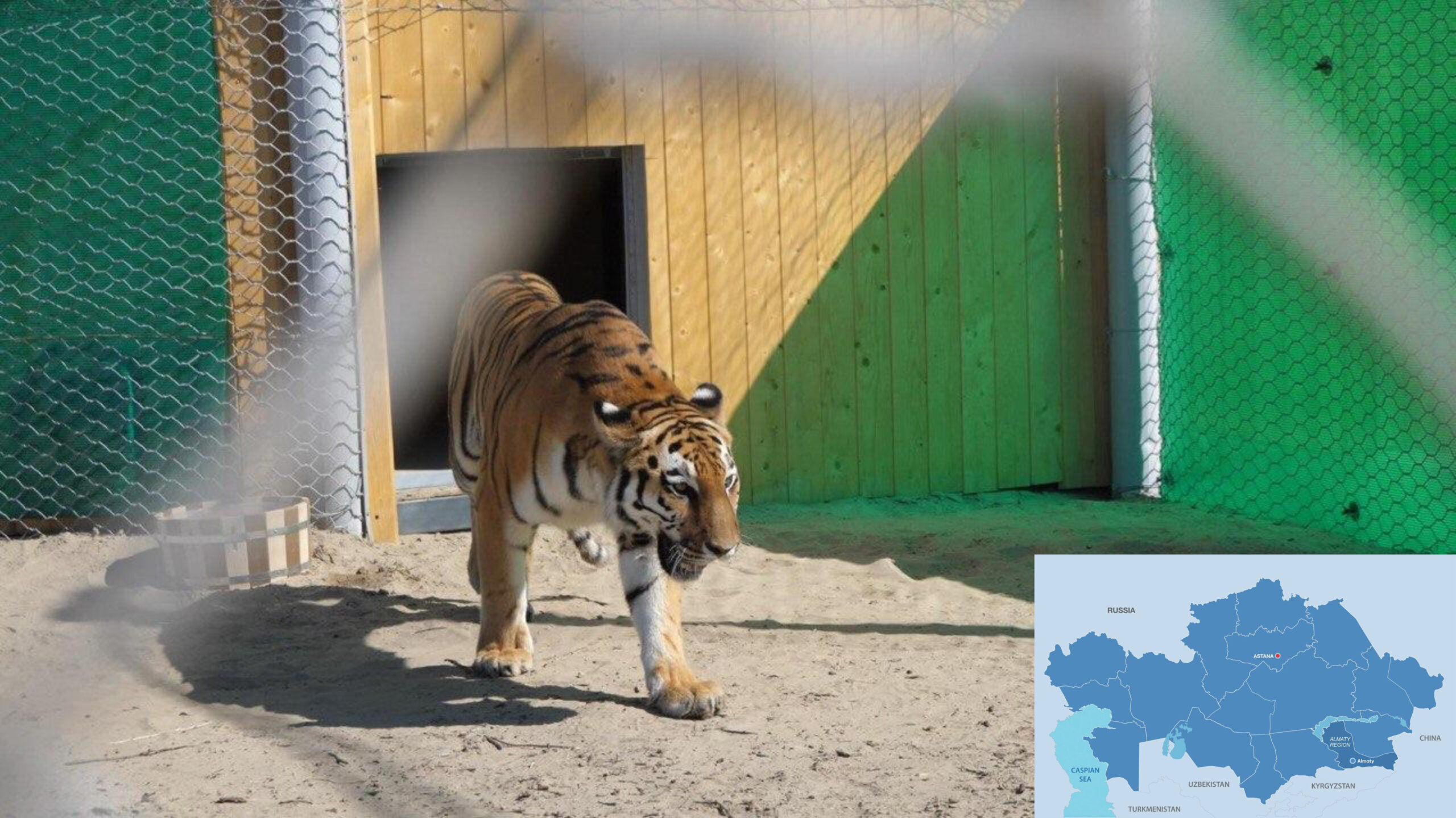ASTANA – Two Amur tigers were transported to the Ile-Balkhash State Nature Reserve in the Almaty Region from the Netherlands on Sept. 22 to revive wild tiger species.

In Kazakhstan, the tigers once dwelled along the sides of Balkhash Lake and the coast of the Amu Darya River. Photo credit: Kazakh Ministry of Ecology and Natural Resources. Click to see the map in full size. The map is designed by The Astana Times.
The animals are now undergoing the acclimatization process in a small enclosure near the protected area of the reserve. After several weeks of adaptation, they are planned to be released into more spacious enclosures and then, possibly, into the wild, reported the Kazakh Ministry of Ecology and Natural Resources.
“It is a historic moment as Kazakhstan has welcomed the first tigers for captive breeding. According to the agreement with Russia, it is expected that three or four more tigers will be delivered from the wild in 2025. For Kazakhstan, this is not only an ecologically important project, but also a symbol of joint efforts to restore the natural heritage,” said Kazakh Minister of Ecology and Natural Resources Yerlan Nyssanbayev.
The government of Kazakhstan and the World Wildlife Fund (WWF) signed a memorandum in 2017 to implement a project aimed at reviving the wildlife population of Turanian tigers, also known as the Caspian tigers, on the southern shore of Balkhash Lake on the Ili River delta area. The program aims to help Kazakhstan restore a healthy tiger population. It is expected that the offspring of Amur tigers released into the wild will become the first wild tigers in the country in the last 70 years. This marks an important stage in biodiversity conservation and the return of extinct species to Central Asia.
“After almost two decades of working for WWF, this project is one of the most extraordinary I have ever worked on. Who would have imagined something like this 15 years ago, when we almost lost the tiger in the wild? This project is not just impressive work with tigers. We are not only saving an endangered species, but also, together with our partners, restoring an entire ecosystem, which brings enormous ecological and social benefits to the people living in these places. The fact that we have come to this after so many years of work gives hope for the restoration of nature and endangered species around the world,” says Gert Polet, wildlife expert at WWF Netherlands.
Historically, the Turan tiger, which became extinct more than 70 years ago, lived in the Pre-Balkhash region. The Turan tigers lived at a high density, which suggests the possibility of creating a sustainable population of nearly 100 individuals — significantly more than most modern tiger populations.
Amur and Turan tigers are considered ecological forms of one subspecies. Thus, after adapting to Kazakhstan’s territory, these tigers will become part of the Turan population on a territorial basis.


